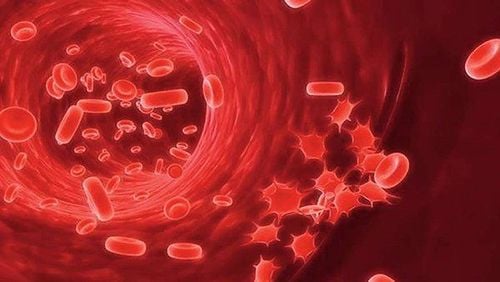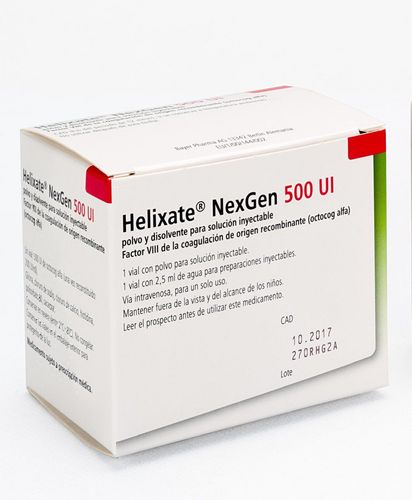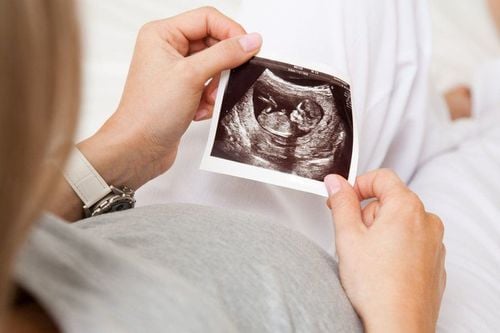This is an automatically translated article.
The article was professionally consulted by Dr. Nguyen Anh Tu - Radiologist - Department of Obstetrics and Gynecology - Vinmec Hai Phong International General Hospital.Hemophilia is an inherited disease, leaving many serious sequelae, even causing premature death. However, the disease has a special genetic mechanism, so it is possible to end the disease gene passing on to the next generation with prenatal diagnostic tests.
1. What is hemophilia?
Hemophilia is an inherited bleeding disorder caused by a deficiency or deficiency or abnormality in factor VIII (for Hemophilia A) or factor IX (for Hemophilia B) - which are necessary for the formation of blood clots. . The highlight of the disease is the bleeding in all parts of the body, typically in the muscles, joints,...Blood not only flows due to trauma, but in severe cases it can bleed on its own. On average, severe patients can bleed 40 times/year and there are cases where the cost of a treatment is up to 1 - 2 billion VND. With early diagnosis and adequate treatment, patients with hemophilia can live and work almost as well as normal people. If left untreated, the patient is always in pain, unable to work, which can lead to disability, even premature death.

2. Inherited Risk of Hemophilia
With each pregnancy, a mother carrying the hemophilia gene has the ability to pass the gene on to the next generation. If the gene is passed on to a boy, the boy will have hemophilia. If it is passed on to a girl, the daughter will carry the hemophilia gene.When married to a normal person, a woman carrying the hemophilia gene has a 25% chance of having a daughter carrying the gene and a 25% chance of having a son with the disease. Thus, women carrying the disease gene who want to have children with normal healthy people still have a 50% chance of having a child without or carrying the disease gene. In case the father has hemophilia and the mother is normal, all daughters will be carriers of the disease, and all sons will not have hemophilia. There is a rare case that a father with hemophilia, a mother who is a carrier of the disease gene, can give birth to a daughter with hemophilia.
Hemophilia is an inherited disease. However, about one-third of patients with the disease are not inherited but due to mutations, normal genes become disease genes and this disease gene is also passed on to the next generation.
3. Amniotic test for hemophilia during pregnancy

Based on the genetic mechanism, to eliminate the disease gene, only the father with the disease does not give birth to a daughter. As for women carrying the disease gene or both husband and wife carrying the disease gene, during pregnancy, the woman needs to do prenatal diagnosis. Before getting married, the patient needs to go to a medical facility specializing in diseases for pre-marital counseling, comprehensive diagnostic testing, disease severity and prenatal counseling,... to give birth. healthy children, suppressing disease genes existing in the family.
Amniotic fluid test can also detect fetal chromosomal abnormalities, thereby identifying hemophilia. The time to perform amniocentesis to find the right hemophilia gene is at 15 - 20 weeks of pregnancy. The doctor will use a long needle-like instrument, poke into the pregnant woman's abdomen, take out a little amniotic fluid for testing without harming the baby. Amniocentesis is quick, simple, and usually painless, so no anesthesia is required.
However, DNA testing or fetal factor VIII quantification or preimplantation diagnosis is the best method to detect and rule out the risk of hemophilia. These methods help create embryos that do not carry the hemophilia gene.
The doctor will select a healthy embryo that does not carry the disease gene from the wife of the hemophilia patient or the woman carrying the hemophilia gene and then implant it in the mother's uterus. From there, the baby will be born completely healthy, free of disease genes and end the hereditary hemophilia in the family.
Please dial HOTLINE for more information or register for an appointment HERE. Download MyVinmec app to make appointments faster and to manage your bookings easily.
Reference source: National Institute of Hematology - Blood Transfusion














